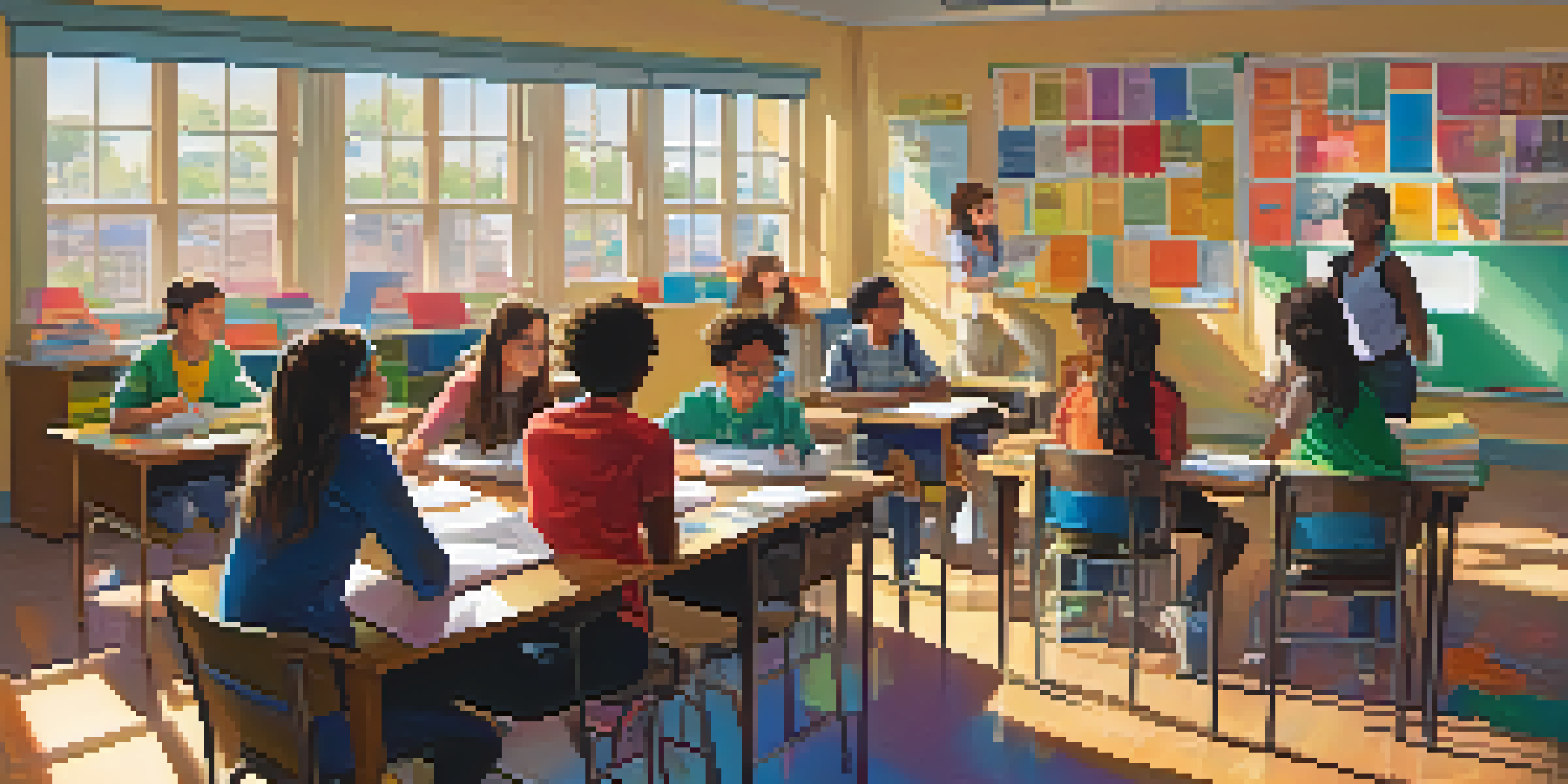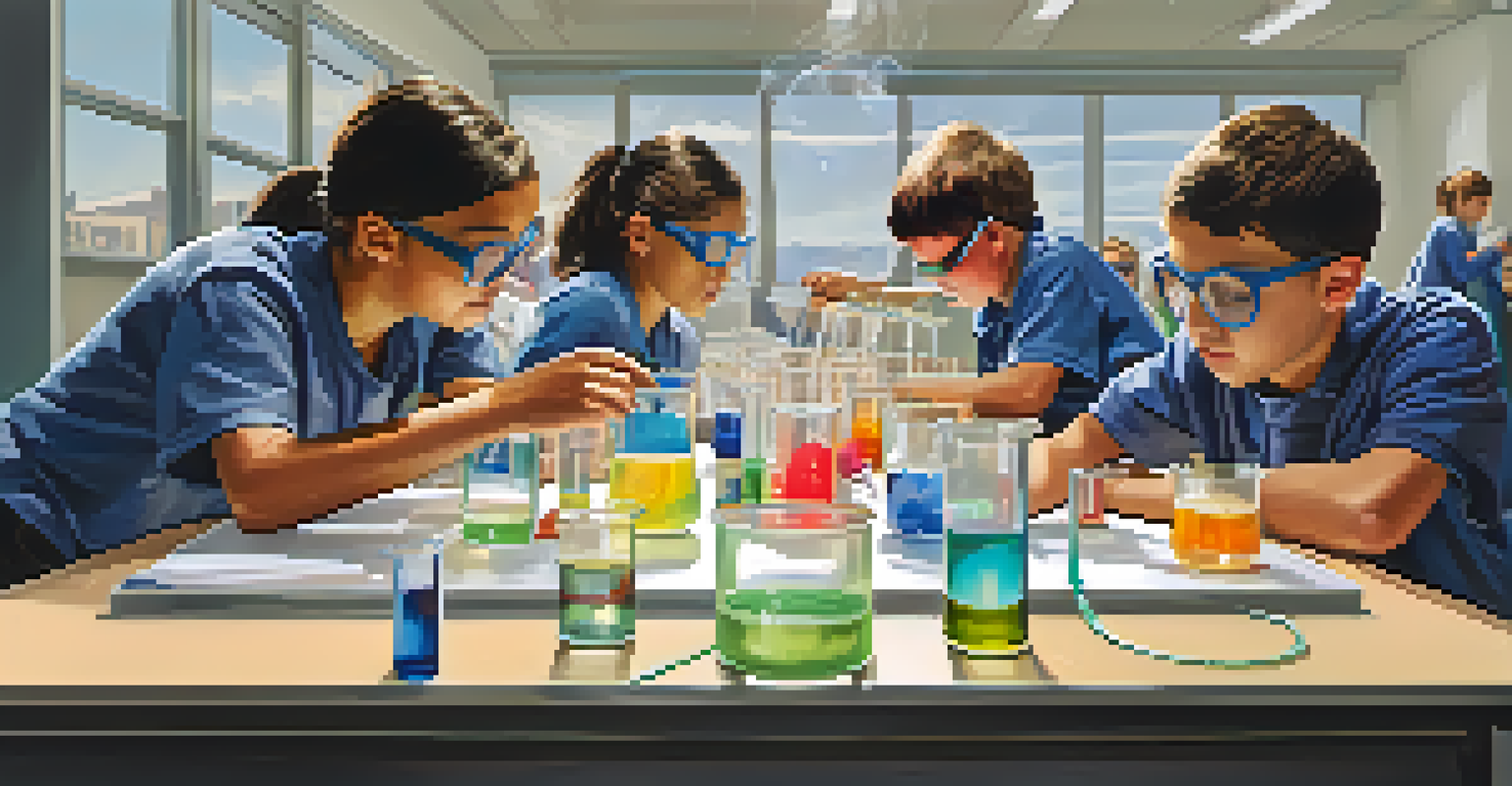Planning Your Educational Tour: Key Considerations to Make

Define Your Educational Objectives Clearly
Before diving into the planning process, it's essential to define what you want to achieve with your educational tour. Are you looking to enhance students' understanding of history, science, or art? Setting clear objectives will help guide all your subsequent decisions.
Education is the most powerful weapon which you can use to change the world.
For instance, if your goal is to deepen students' appreciation of environmental science, your itinerary should include visits to relevant sites like nature reserves or sustainability-focused organizations. This focus ensures that every stop on your tour aligns with your educational goals.
Furthermore, sharing these objectives with participants can boost their engagement and excitement. When students understand the purpose behind each activity, they are more likely to appreciate the experience and retain what they learn.
Choose the Right Destinations for Learning
Selecting the appropriate destinations is crucial for creating a meaningful educational experience. Consider locations that not only offer educational value but also inspire curiosity and passion in your students. Research potential sites thoroughly to ensure they align with your objectives.

For example, if your focus is on historical events, visiting iconic landmarks or museums can provide a vivid context that textbooks often lack. On the other hand, if you’re emphasizing cultural learning, consider destinations with rich traditions and local interactions.
Define Clear Educational Objectives
Setting specific goals for your educational tour helps guide planning and enhances student engagement.
Remember, variety can enhance learning too! Mixing different types of locations—such as museums, outdoor settings, and interactive centers—can cater to diverse learning styles and keep the experience dynamic and engaging.
Budget Wisely to Maximize Resources
Budgeting is a critical aspect of planning your educational tour. Start by outlining all potential costs, such as transportation, accommodation, meals, and entry fees for attractions. This comprehensive approach will help you avoid any unexpected expenses later on.
The beautiful thing about learning is that no one can take it away from you.
Consider also seeking partnerships or sponsorships that might alleviate some financial burdens. Local businesses or educational organizations may be willing to support your tour in exchange for promotional opportunities.
Finally, don’t forget to involve participants in the budgeting discussion. Understanding the financial aspects can foster a sense of responsibility and encourage students to value the experience more.
Plan an Engaging Itinerary with Balance
Creating an engaging itinerary is about finding the right balance between educational activities and downtime. While it's tempting to pack the schedule with as many visits as possible, remember that students also need time to process and reflect on what they've learned.
Incorporate a mix of structured activities and free time. Structured visits can include guided tours or hands-on workshops, while free time allows students to explore and engage with their surroundings at their own pace. This variety can enhance their overall experience.
Choose Destinations Wisely
Selecting locations that align with your objectives can create a more meaningful and inspiring learning experience.
Additionally, consider the pacing of your activities. Long travel days can be exhausting, so planning shorter travel segments or rest periods can help maintain energy levels and enthusiasm throughout the tour.
Incorporate Interactive Learning Experiences
To make the most of your educational tour, think about how you can incorporate interactive learning experiences. These hands-on activities can significantly enhance student engagement and retention of information. Look for opportunities that allow students to participate actively.
For instance, instead of just visiting a science museum, look for labs where students can conduct experiments or workshops where they can create something tangible. This active participation can spark curiosity and foster a deeper understanding of the subject matter.
Moreover, encourage students to ask questions and facilitate discussions during these activities. This not only promotes critical thinking but also helps students connect theoretical knowledge with practical application.
Prepare Students with Pre-Tour Activities
Preparing students before the tour is key to maximizing its educational impact. Conducting pre-tour activities can set the stage for what they will experience and help them engage more deeply during the trip. Consider organizing discussions or research assignments related to the tour's destinations.
For example, if you're visiting a historical site, students could research its significance beforehand. This preparation can lead to more meaningful questions and interactions during the actual visit, enriching their learning experience.
Incorporate Interactive Learning
Engaging students in hands-on activities fosters deeper understanding and retention of information.
Additionally, you can encourage students to share their expectations and goals for the tour. This can foster a sense of ownership and build excitement, making them more invested in the journey.
Follow Up with Reflection and Debriefing
Post-tour reflection is just as important as the planning and execution stages. Taking time to debrief with students can help solidify their learning experiences and allow them to articulate what they’ve gained. This could be done through group discussions, journaling, or presentations.
Encouraging students to share their insights and personal takeaways can deepen their understanding and foster a sense of community. It also provides an opportunity for them to connect the dots between their experiences and the educational objectives you set at the start.

Moreover, gather feedback on the tour itself. Understanding what worked well and what could be improved will not only enhance future tours but also demonstrate to students that their opinions are valued.